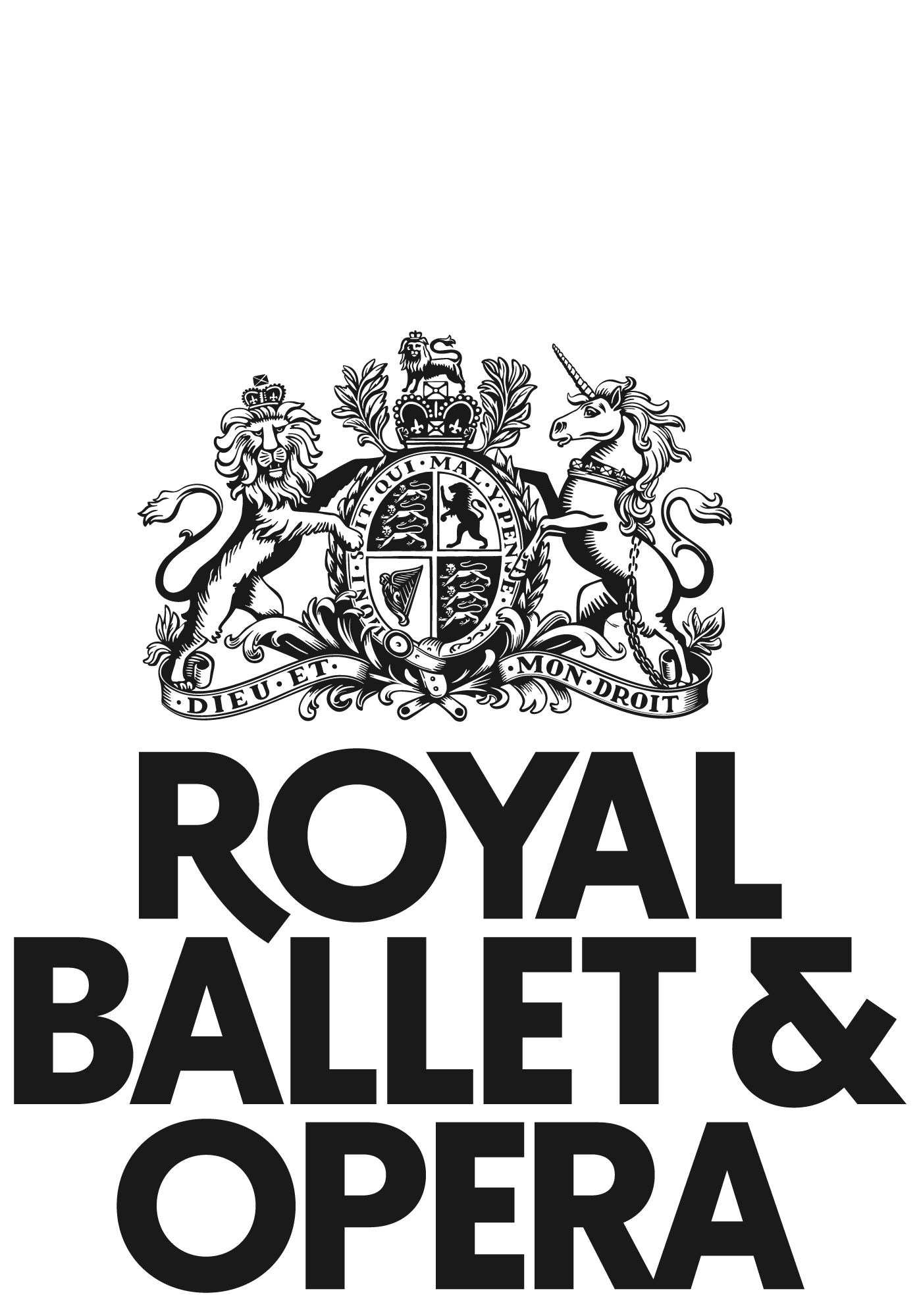Sustainability Stories
Read about how we are securing a sustainable future for the Royal Opera House.
Read about how we are securing a sustainable future for the Royal Opera House.
We recognise that everything we do has an impact on the environment – at our home in Covent Garden and at our sites in Thurrock in Essex and Aberdare in Wales. This includes events and activities led by The Royal Opera and The Royal Ballet, as well as our nationwide education programmes. Our audiences, staff and artists have an effect too. We are making changes now to reduce this impact, and clearly communicate the steps we are taking.
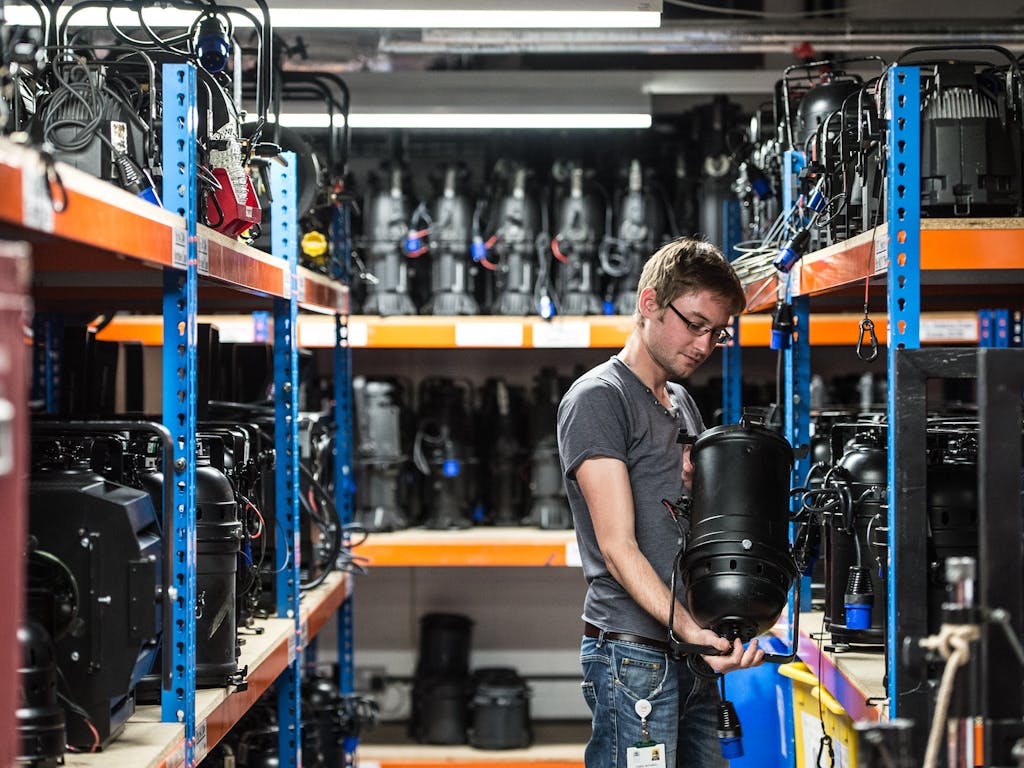
Lighting the Future
On Thursday, 12 December, the Royal Ballet and Opera hosted the Lighting Rehome Project in Aberdare, offering well-maintained costumes and equipment for free to those in need. The only requirement was that recipients pick up the items from our warehouse in Aberdare . After an online call, the Lighting Systems Team received over 5,000 applications from across the UK. Prioritising educational institutions, charities, and community groups, they donated around 6.5 tonnes of equipment to different 35 organisations.
Rachael O’Sullivan, our Environmental Manager, went to hear some of the stories of the organisations receiving these lights:
- Richie Turner is the Incubator Manager at University of South Wales and is responsible for running their graduate entrepreneur and community start up programme. They have recently opened a new Community Engagement Hub at their campus in Newport, but they don’t have any funding for AV equipment. Now with our lights they will be able to offer a lighting set up for community groups to use in this brand-new location right in the city centre.
- Diane and Phil Janssen travelled from Cambridge to collect lighting for their charity, Bedazzle Arts. They offer teaching services to young adults with a range of disabilities, using performing arts to help students learn a huge range of skills; not only performance and technical skills but also building confidence and social skills. All Bedazzle’s productions have at least 50% crew and 90% cast who identify as disabled. They also delivery Community Theatre groups bringing disabled people together to enjoy each other’s company and get involved in performance. Diane Janssen, said: ‘Having access to high quality equipment will enhance learning opportunities and elevate production values. We are very grateful to be benefiting from the rehoming scheme’.
- The Rochdale Pheonix Opera Society are a small operatic society that have recently moved locations due to lack off accessibility, and their new venue has very limited lighting. Our lights will ensure their audience can catch all the action on stage and we even donated a throne from our props for the Rochdale Pheonix Opera Society’s next production.
- The Little Angel Theatre in London is a puppet theatre that has been operating since 1961, out of a temperance hall that was built in the 1700s. The theatre is one of the few remaining locations which has two puppet bridges meaning they can perform long string puppetry, a traditional craft that is now a rarity. The theatre has two performance spaces but also sends out ‘suitcase theatres’ putting on performances for prisons, schools, and community theatres. They currently have around seven productions on show in various locations around the country including Julia Donaldson’s Singing Mermaid, Finding Santa and Me. They took a selection of lights that will boost their existing stock, provide replacements as parts fail, and Source 4s that they will retrofit to LED lights. The Little Angel also took a Patt Effects Projector which will be used by director David Duffey to make into a miniature puppet theatre.
- South Gloucestershire and Stroud College, based in Bristol, are a sixth form and higher education college. They have two theatres where they teach their students technical and performing arts skills. Although their main stage has been converted to LED already, they plan to keep their smaller stage for as long as possible to ensure that their students are equipped with skills for any equipment they might come across in the industry. Our rainbow scrollers mean that this stage will now have increased options for colour.
- Bristol School of Acting was established in 2020 and have this year started offering a two-year accelerated BA degree course in Technical Theatre Arts. This course, with a cohort of six this year, aims to give students hands on experience of working in the theatre. Our equipment will help ensure that they have experience of lighting their own stage before they are sent out on placement modules in the summer term.
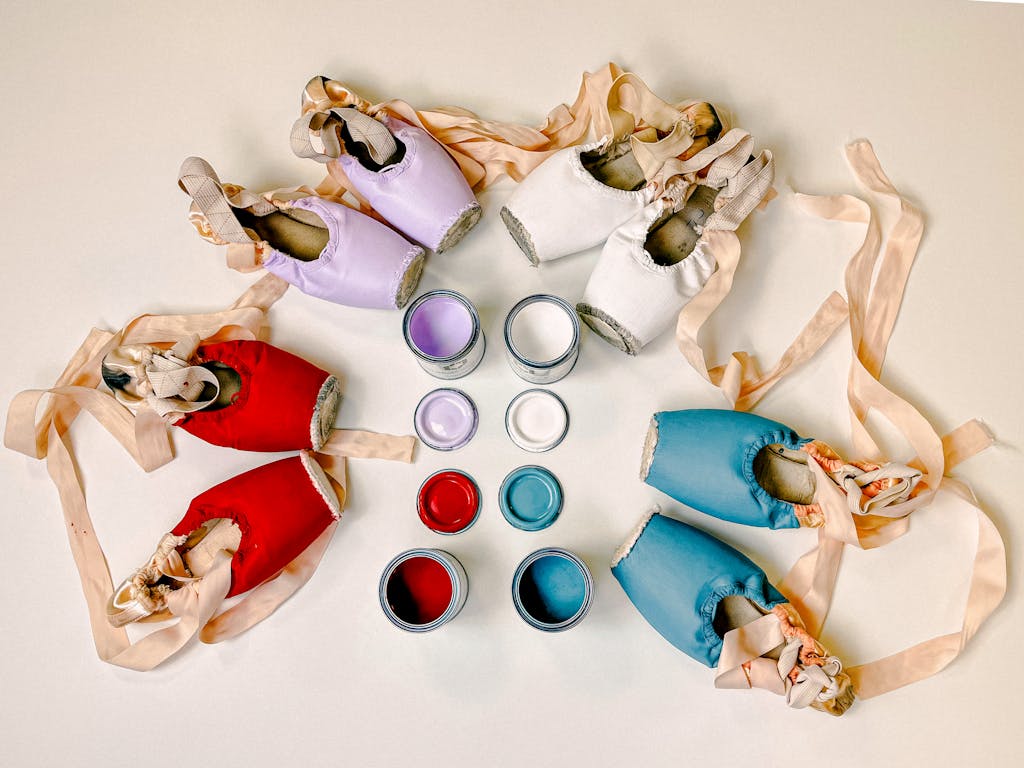
Painting the future green!
Launching 16 eco-friendly paint colours inspired by classic productions like Carmen and Romeo and Juliet. These sustainable paints, made from natural materials and certified by Cradle to Cradle, not only enhance your spaces but also purify indoor air.
The Royal Ballet and Opera has collaborated on a new range of 16 eco-friendly paint colours with Graphenstone, inspired by the artistry on RBO stages this season. Graphenstone’s Purifying Paints are changing the interiors industry. They source sustainable raw materials like lime and natural minerals, and fuse these with inert carbon ‘graphene’, creating a durable, mineral-based coating. Certified by Cradle to Cradle, Graphenstone manufactures sustainable and healthy paints, actively purifying your indoor air. Graphenstone made their RBO debut in the 23/24 season, with a starring role in Damiano Michieletto's new production of Carmen. The Scenic Painting team were delighted with the paints, with plans to use Graphenstone on a number of upcoming productions, both at the Royal Ballet and Opera and across the globe.
The 16 colours of the new collection are inspired by four of the Royal Ballet and Opera’s most loved productions, Alice’s Adventures in Wonderland, Cinderella, Romeo and Juliet and Carmen. From bold shades of red and blue for statement pieces, to softer whites and pastels for any room in the home, the collection will have something to surprise and delight any aspiring decorator. This new collaboration underlines the Royal Ballet and Opera's commitment to sustainability by partnering with innovative, green-minded companies. By collaborating with Graphenstone, we are not only reducing our environmental impact but also contributing to broader net zero ambitions.
Royal Ballet and Opera Embrace Greener Printing with Pureprint Group
Pureprint is a carbon neutral company® and the paper is carbon balanced. The redesigned programmes retain the high-quality finish but with less impact on the environment and are easier to recycle.
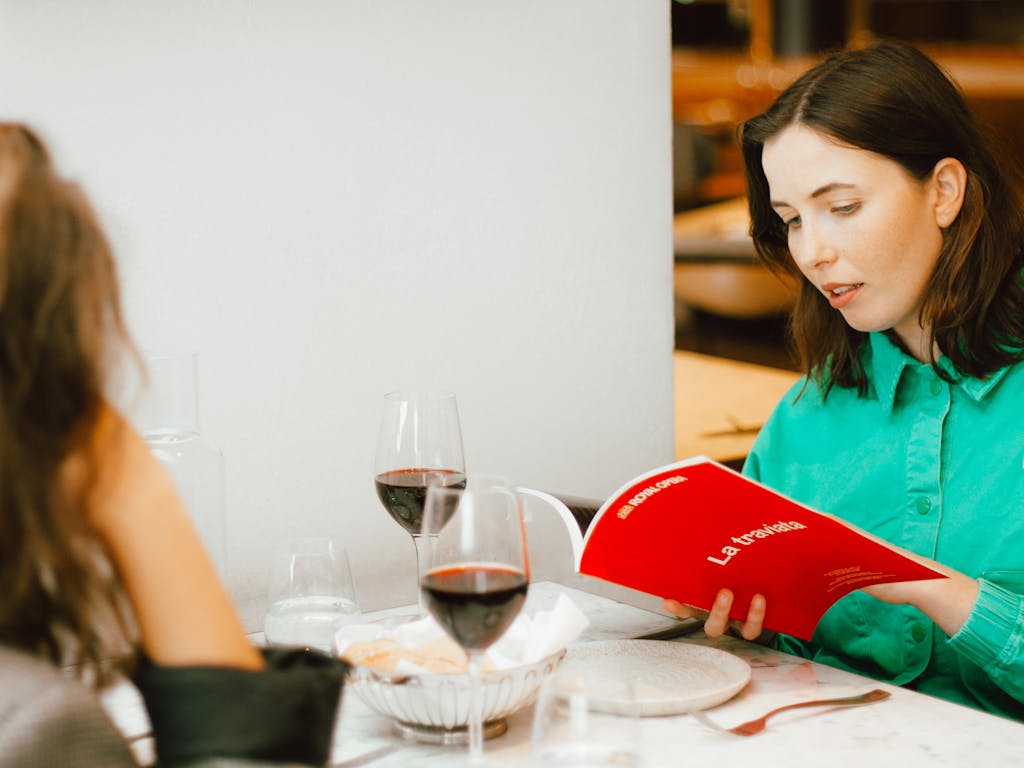
The red front cover, which maintains its glossy appearance, now utilizes a water-based coating instead of a plastic laminate, making it easier to recycle. The paper used is FSC® certified supporting responsible forestry, and the printing inks are vegetable-based, further reducing the programmes' ecological footprint.
Pureprint Group's environmental leadership extends beyond the materials used. The company has reduced carbon emissions by using electric vehicles for all deliveries within central London and optimisation of printing to reduce print runs and save energy.
A pioneer in environmental stewardship, Pureprint Group was the first printer to receive international environmental accreditation (ISO14001) and has been honoured with the Queen's Award for Sustainable Development three times. They support the work of the World Land Trust to help preserve high conservation value land and we are pleased to be working with them to continue in our efforts to reduce our impact on the environment.
This new partnership underscores the Royal Ballet and Opera's commitment to sustainability while continuing to deliver the exceptional quality their audiences expect. By choosing Pureprint Group, we are not only reducing our environmental impact but also contributing to broader conservation efforts.
MODULAR SCENERY FOR MULTIPLE PRODUCTIONS
Modular scenery increases the use of reused and recycled materials, with the aim of reducing the quantity of raw materials bought for a show and the associated carbon footprint. Modular scenic elements that can be reused and shared between shows are becoming increasingly popular in Opera Houses across Europe, as the industry works towards a more sustainable model for making productions.
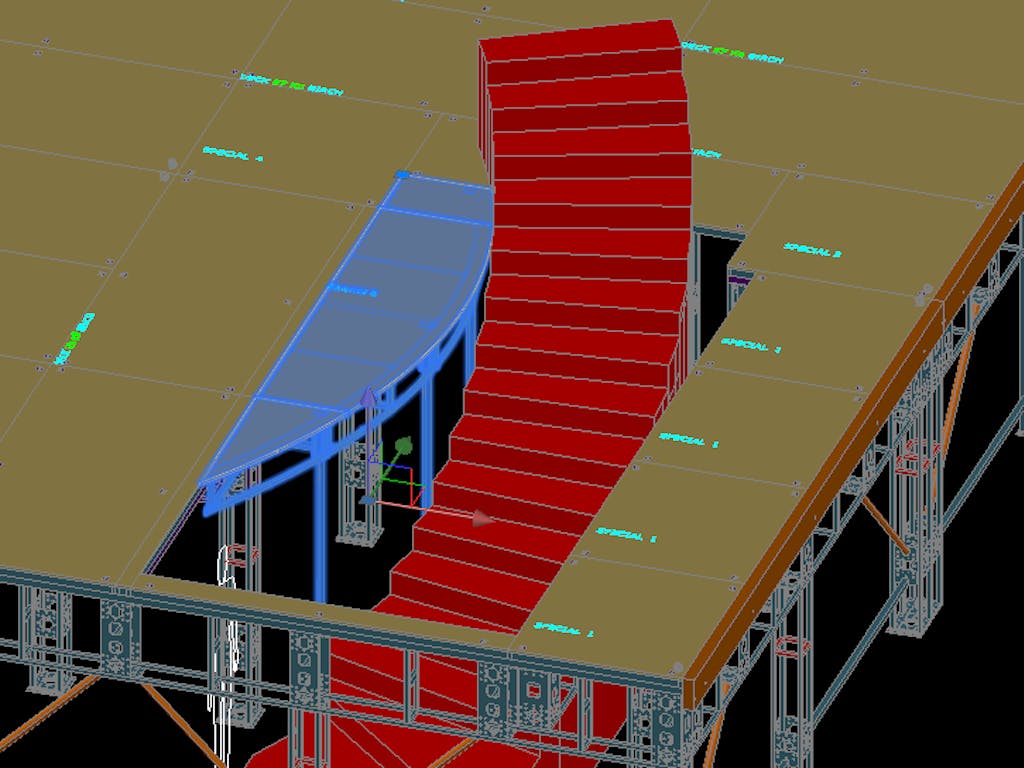
The Royal Opera House has formally recognised the climate and ecological crisis and made a commitment to create productions that work towards a more sustainable production model as outlined by the Theatre Green Book. The Theatre Green Book was an initiative set up in 2020 by the theatre sector in partnership with sustainability experts Buro Happold. It sets standards for making productions, theatre buildings and operations more sustainable.
To work towards this goal, the Scenic Construction Team at the Bob and Tamar Manoukian Production Workshop in Thurrock are currently working to expand their selection of modular scenery for opera and ballet productions that take place on the Main Stage. They have developed a stock of stretch frames which are typically used for walls and background features in set and scenery. Each stretch frame is made up of a variation of three components - edge, triangle and flat pieces, all available in different dimensions to create various sizes of stretch frame for production designers to choose from. Specially built components made for last season’s Samson et Dalila and Wayne McGregor’s Untitled, 2023 are included in this stock for future reuse. A selection of these modular stretch frames were used for Das Rheingold and will be used in Jephtha amongst others throughout the 2023/24 Season.
The team are also developing larger modular scenic elements to be shared across productions. This includes a large construction (known as an in-fill) originally made for the staging of La traviata. The in-fill is designed to be lowered on stage so that the top is level with the surrounding stage, creating space for substage access for performers or equipment. It has been created with a set of components that can be reconfigured in many different ways. As well as for La traviata, it will be reused throughout Barrie Kosky's upcoming Ring cycle.
Importnatly, these guidelines do not limit vision and practice but instead create a framework on which a production design may be constructed, helping the Royal Opera House and the wider industry to work towards a more sustainable model for production design.
SUSTAINABLE CORONATION DECORATIONS
The Royal Opera House worked with local school, St Clements Danes CofE Primary School, to create bunting for the Coronation
celebrations created from costume and props materials previously used in Royal Opera House productions.
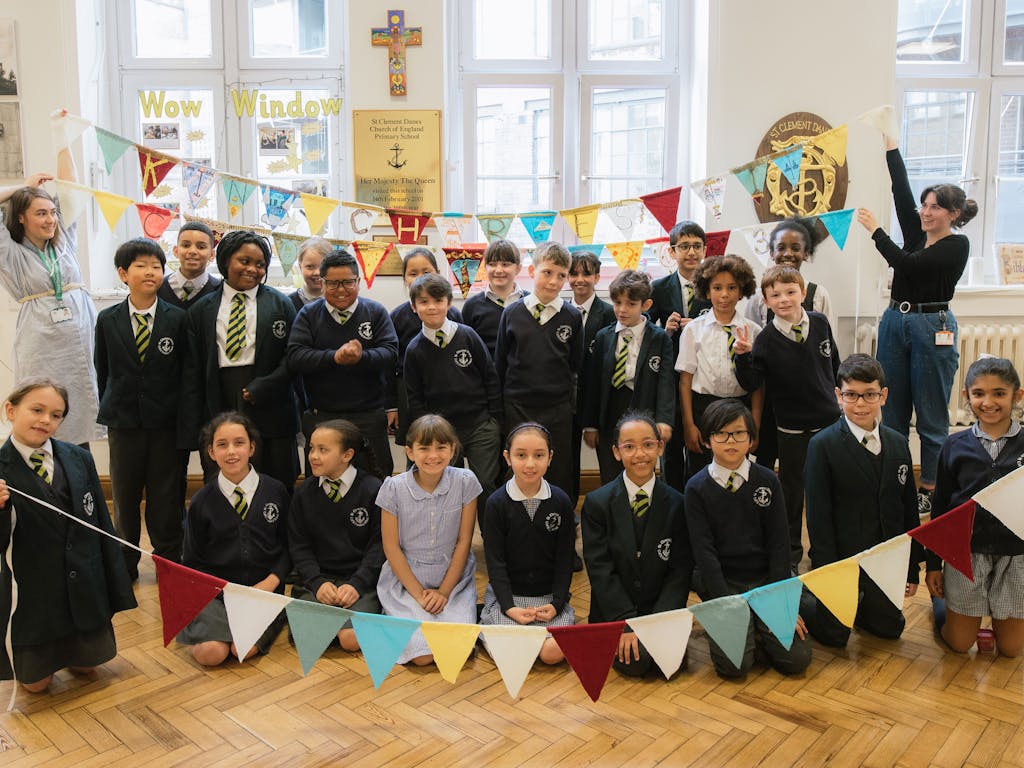
The Royal Opera House costume and props department spent a day with the children at local St Clements Danes CofE Primary School teaching them skills in creating and decorating for a very special project making celebratory bunting for the King's Coronation on 6 May 2023.
The costume department donated bags of fabric left over from costumes that have graced the Royal Opera House Stage and gave the schoolchildren the opportunity to work alongside members of the team and learn how to cut patterns, design individual pieces and create unique sustainable Coronation bunting. The unused pieces of fabric were cut to shape with each child designing their own letter, with the bunting spelling out ‘King Charles Coronation 2023’.
The Coronation bunting will be on display at St Clements Danes CofE Primary School as part of their celebrations to mark the King's Coronation, as well as displayed throughout The Royal Opera House across the Coronation weekend.
Suited & Booted
In 2019, the Royal Opera House costume department discovered over 2,000 front of house staff uniforms no longer in use. Wanting to extend the life of these quality items, we partnered with London-based charity Suited & Booted to provide smart workwear for vulnerable, unemployed and low-income men, helping them enter employment and move their lives forward.
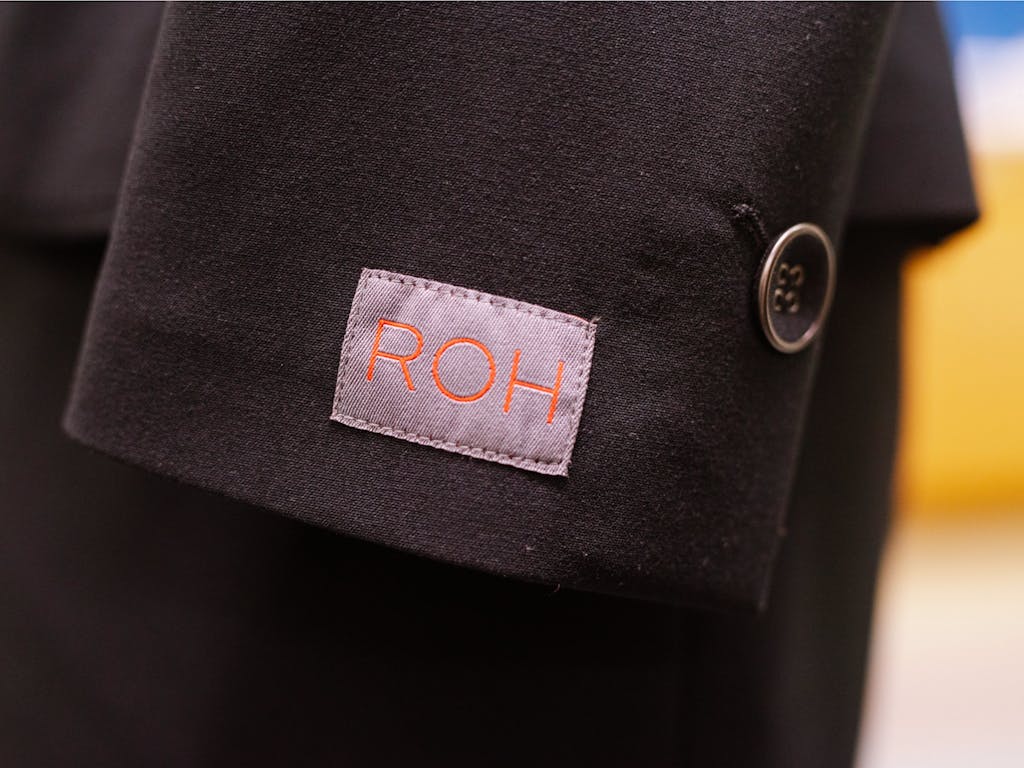
The Royal Opera House provided 1,929 items – including jackets, trousers, waistcoats, T-shirts and shirts – to men preparing for job interviews. By reusing quality clothing, the project has saved 17 tonnes of CO2E (the equivalent of 17 hot air balloons) from being released into the atmosphere, had the items gone to landfill.
Most importantly, the service provided by Suited & Booted has boosted confidence and changed lives. The partnership has enabled service users to move forward following chaotic life experiences, which include addiction, prison and homelessness. We look forward to continuing this work across 2022-2023.
Suited & Booted is a charity that helps vulnerable, unemployed and low-income men into employment by providing interview clothing and interview advice. They aim to make a difference so that people can move forward with the ability to succeed and find their own way in society.
You can find out more about their work on the Suited & Booted website.
Thurrock Ground Source Heat Pump
Our workshops are purpose-built to allow creation of the vast sets and scenery you see on the main stage. The ground source heat pump was originally installed in 2012 to provide sustainable heating to the workshops: water is circulated through 16 loops of pipework that run through boreholes drilled into the ground below the workshop. This more sustainable system saves around 25 tonnes of carbon dioxide in comparison with a conventional heating and cooling system, that’s the same amount as would normally be produced by 25 domestic gas boilers.
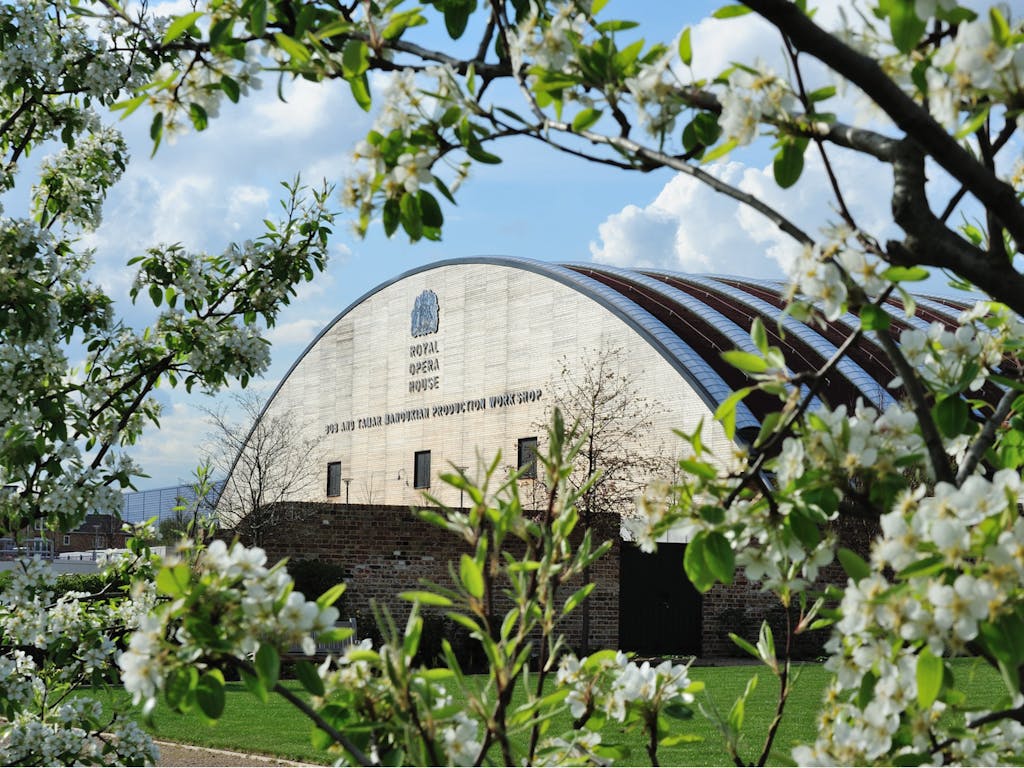
The Bob and Tamar Manoukian Costume Centre opened at High House Production Park in Thurrock in October 2015 and is home to teams of highly-skilled scenic artists, carpenters, draughtsman, and metalworkers in the Royal Opera House Production Workshop. At the time of opening, Thurrock was at the forefront of sustainable building construction and is now doing even more to help both the local and global environment.
The Bob and Tamar Manoukian Costume Centre is home to over 20,000 costumes from the Royal Opera House repertory, together with over 6,000 items from the historic collection including items worn by Maria Callas and Margot Fonteyn. High House Production Park is also home to the Backstage Centre; a flagship national training centre for Creative & Cultural Skills; and High House Artists’ Studios. The 39 artists’ studios and four work/live units are managed by Acme Studios.
Both the Royal Opera House buildings at the High House Production Park are uniquely heated and cooled. In the hotter months, the buildings are kept cool by natural ventilation that does not use mechanics to freshen the air, unlike conventional methods that rely on energy-using cooling plants. In the colder months, the buildings are headed by a ground source heat pump. This has lead to the Centre receiving a BREEAM excellent rating, meaning that they are in the top 10% of sustainable non-domestic buildings in the UK.
The Royal Opera House has recently refurbished and updated the ground source heat pump at the Bob and Tamar Manoukian Production Workshop in Thurrock. Our workshops are purpose-built to allow creation of the vast sets and scenery you see on the main stage. The ground source heat pump was originally installed in 2012 to provide sustainable heating to the workshops: water is circulated through 16 loops of pipework that run through boreholes drilled into the ground below the workshop. The cool water entering the system is warmed by the surrounding rock and provides heating to the building. However, it has been found that during the extreme temperatures of summer, a system with cooling, as well as a heating was required.
Rather than replacing the ground source heat pumps completely, we upgraded the existing system. By replacing the heat pumps with more efficient units that have reversing valves, the system can now provide cooling as well as heating, to the workshop spaces and the other facilities within the building. This more sustainable system saves around 25 tonnes of carbon dioxide in comparison with a conventional heating and cooling system, that’s the same amount as would normally be produced by 25 domestic gas boilers.
Staff that work in our Thurrock production workshops act sustainably every day, even without thinking about it. The water around the building is gathered both from rain water and excess irrigation water, meaning that there is very little water waste or water pooling on the roof.
We are also proud to have a sedum roof. A sedum roof is a layer of living plants deliberately added to a conventional roof to benefit the local environment. Local air quality is improved with CO2 being absorbed by the plants. These roofs are also wildlife friendly which in turn helps the garden at Thurrock thrive too.
Royal Opera House Covent Garden Foundation, a charitable company limited by guarantee incorporated in England and Wales (Company number 480523) Charity Registered (Number 211775)
